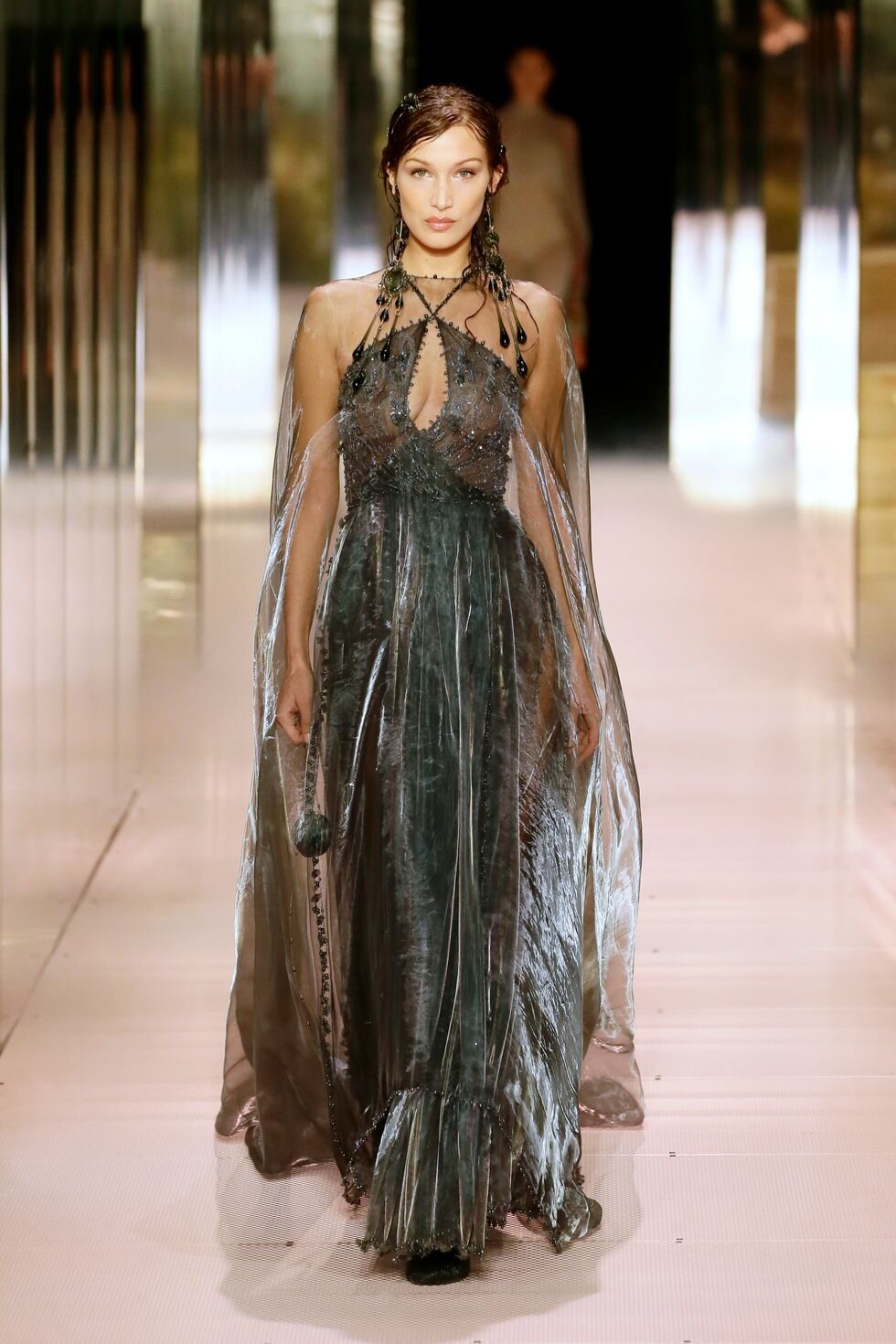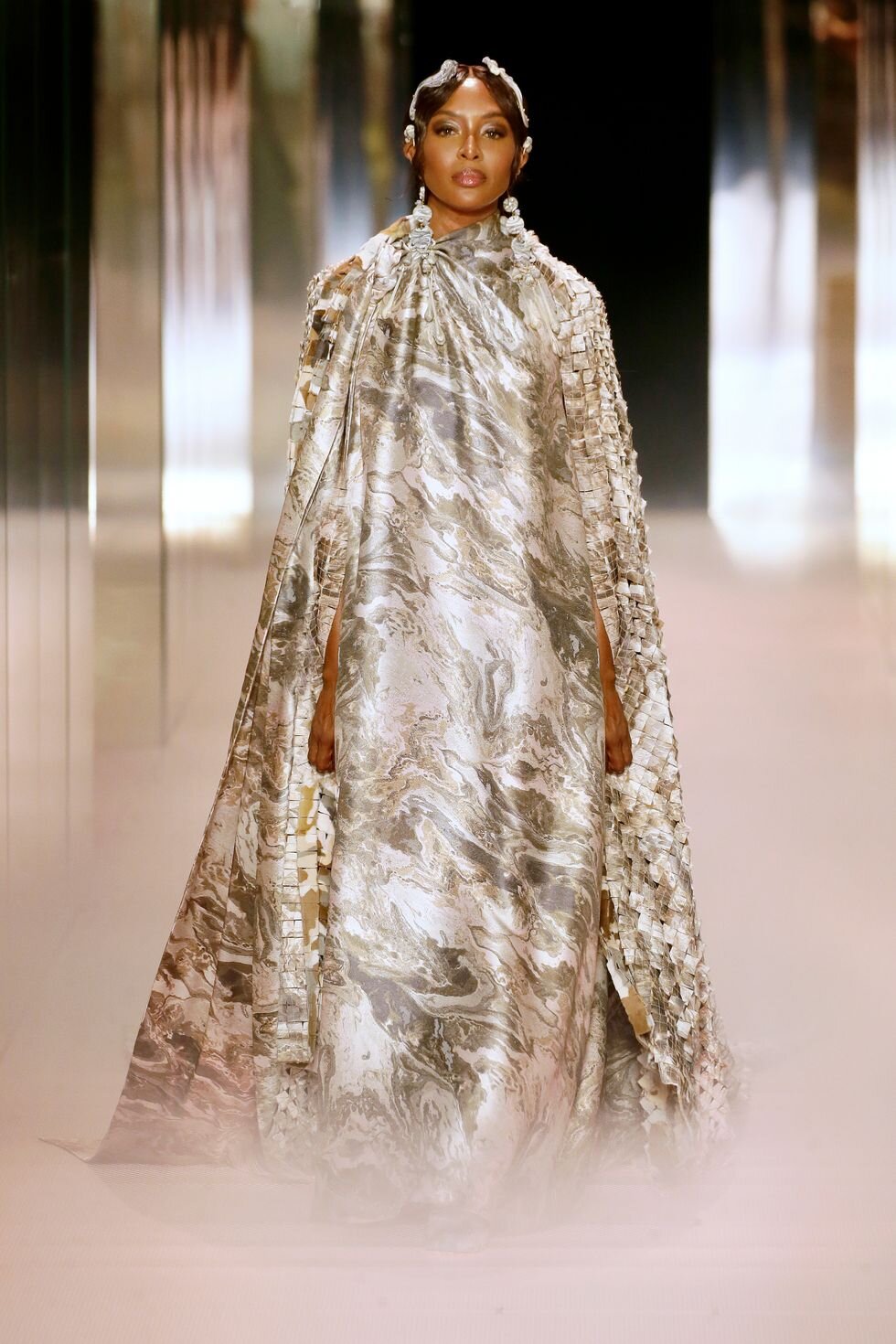Fendi Spring-Summer Collection: The Kim Jones Debut
Karl Lagerfeld’s relationship with Fendi was impregnable. Its timeless Roman heritage combined with his originality of thinking as creative director made for an unstoppable match on the runway and defined him as a pillar of haute couture. Since his death in February 2019, anxieties surrounding Fendi’s artistic future lingered. But the recent announcement of Kim Jones as creative director of Fendi womenswear allowed the fashion world to breathe a sigh of relief. Surprisingly, Silvia Fendi also demonstrated that she was more than capable of taking the house reins, with her debut Spring 2020 collection described as a “high-fashion twist to gorpcore: sequined dresses, sheer tops and colourful fur coats in gingham; dark khaki utilitarian-style garments; and quilted coats, skirts and jackets in pretty pastels.”[1] However, Jones’ appointment marked his first debut in a number of categories, including his first collection for Fendi, his first collection for womenswear and the house’s first spring-summer haute couture show.
It's important to recognise Fendi’s historic use of fur, which might play an integral part in why Jones has initiated the house’s first spring-summer collection. Fendi was notorious for featuring fur and mink in its collections regularly under Karl Lagerfeld’s directorship. It is for this reason that spring-only collections were acceptable for the house, as the spring womenswear collection was recognised by Fendi clientele as the fur collection. The house made a lot of revenue from this consistent tradition, and this arguably puts a lot of pressure on Jones in replicating Lagerfeld’s vision. However, with growing criticism levelled against the fur trade and increased demands for eco-conscious fashion, change is not just anticipated but expected. This new Fendi era marks an opportunity for Jones to carve his creative vision independent of Lagerfeld’s monumental legacy, whilst also paying homage to his foundational work. The spring-summer collection does this perfectly, mixing elegant Lagerfeld staples with newer, non-conforming designs. Thus, armed with his already extensive background in fashion creation, Jones distinguishes himself as the new face of Fendi while showcasing the house’s continued relevance and adaptability.
This debut focuses on elements of innovation and postmodernity in fashion – especially regarding gender nonconformity – influenced by Virginia Woolf’s novel Orlando. Jones’ fascination with the text and its adaptations is well-known, and in this show, he fashions his muses and connections into a contemporary reincarnation of the Bloomsbury Group, fusing past with present. His designs seem to pursue a genderless narrative, uniting strength with fragility and raising questions about our relationship with gendered clothing. Orlando has been interpreted many times on the runway, but Jones’ ability to weave subtle influences from the text into his designs coincides with a modern-day demand for genderless couture. This fluidity is mirrored in the mixed gender, intergenerational casting (Kate and Lila Grace Moss, Christy and James Turlington, Adwoa and Kesewa Aboah), as well as Sam McKnight’s ‘wet hair’ look and Peter Philips’ makeup. Opting for elegant luminosity, his choices similarly interrogate gender and labels (or a lack there-of) through bold red lips and glossy eyes on male and female models alike. Encouraging a freer approach towards fashion, Jones’ message ultimately dismantles gender binaries and their relevance in socio-political fashion, adopting a non-restrictive approach which instead inspires us to explore identities outside of our own.
Due to the ongoing Covid-19 pandemic, there was much speculation as to whether this collection would be shown virtually. Despite several other shows of the season going ahead in-person, Fendi’s collection was ultimately digitalised. Jones used this to his advantage, taking the opportunity to play with viewers’ perspective via the camera lens, which revealed close-up details and references usually invisible to a live audience. Set in a labyrinth of glass capsules shaped as the Fendi logo, there was an almost museum-like atmosphere to the show, with the models interacting with one another yet protectively distanced in the space. Elsewhere, the set floor and surrounding arches referenced Fendi’s heritage as a Roman house, with Jones effectively manipulating the space and the movement within it as a mode of digital storytelling.
As introductions go, this is definitely one to be excited about. Hopefully this era at Fendi will see fewer major collaborations like Jones does at Dior Homme, and focus instead on his own original designs as creative director. Given his extensive grounding in fashion creation and history, we can be sure to expect further innovation and thought in future collections.
[1] Bobila, Maria. “Silvia Venturini Fendi Makes her Ready-to-wear Debut at Fendi for Spring 2020” Fashionista (2019).




